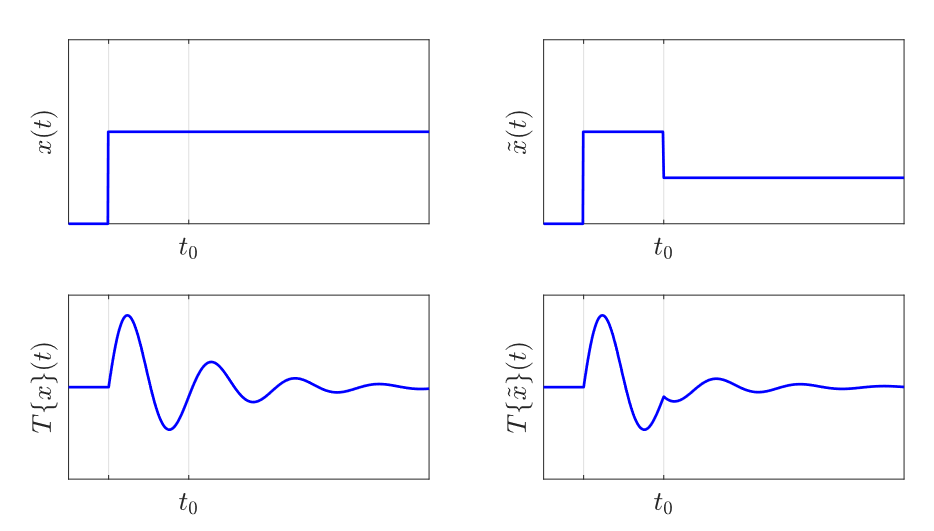Causality is a systems property. A CT system is causal if , the output depends only on the past and present input values, . What this means intuitively is that the system doesn’t “look into the future”. Note that all models of physical systems are causal (which intuitively makes sense!). A special case of causality is a system that is memoryless.
An equivalent definition states that a system is causal if for any time , and two inputs that satisfy , then the corresponding outputs satisfy . Geometrically, this means that if the inputs line up until some time , then the corresponding outputs must also line up until that time.
A linear CT system is causal only if for any time and any input such that , the output satisfies . If a right-sided input from time produces a right-sided output from time , then the system is causal.
Theorem
By theorem, for a causal LTI system with impulse response , if is right-sided from time 0, then is right-sided from time 0 and:
See the below.1 Note how and line up until . Their outputs also line up until that time!
 Causal systems can be checked by inspection. Does the explicit formulation of the system depend on values of ? If so, we know the system is not causal.
Causal systems can be checked by inspection. Does the explicit formulation of the system depend on values of ? If so, we know the system is not causal.
Footnotes
-
From Prof Simpson Porco’s lecture notes. ↩